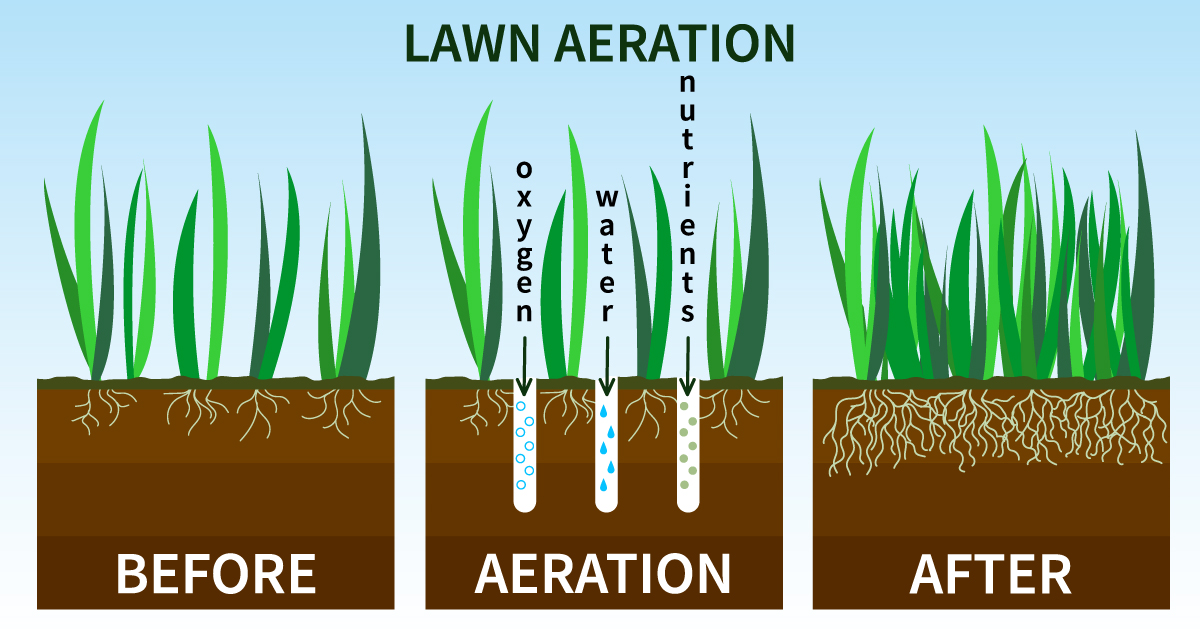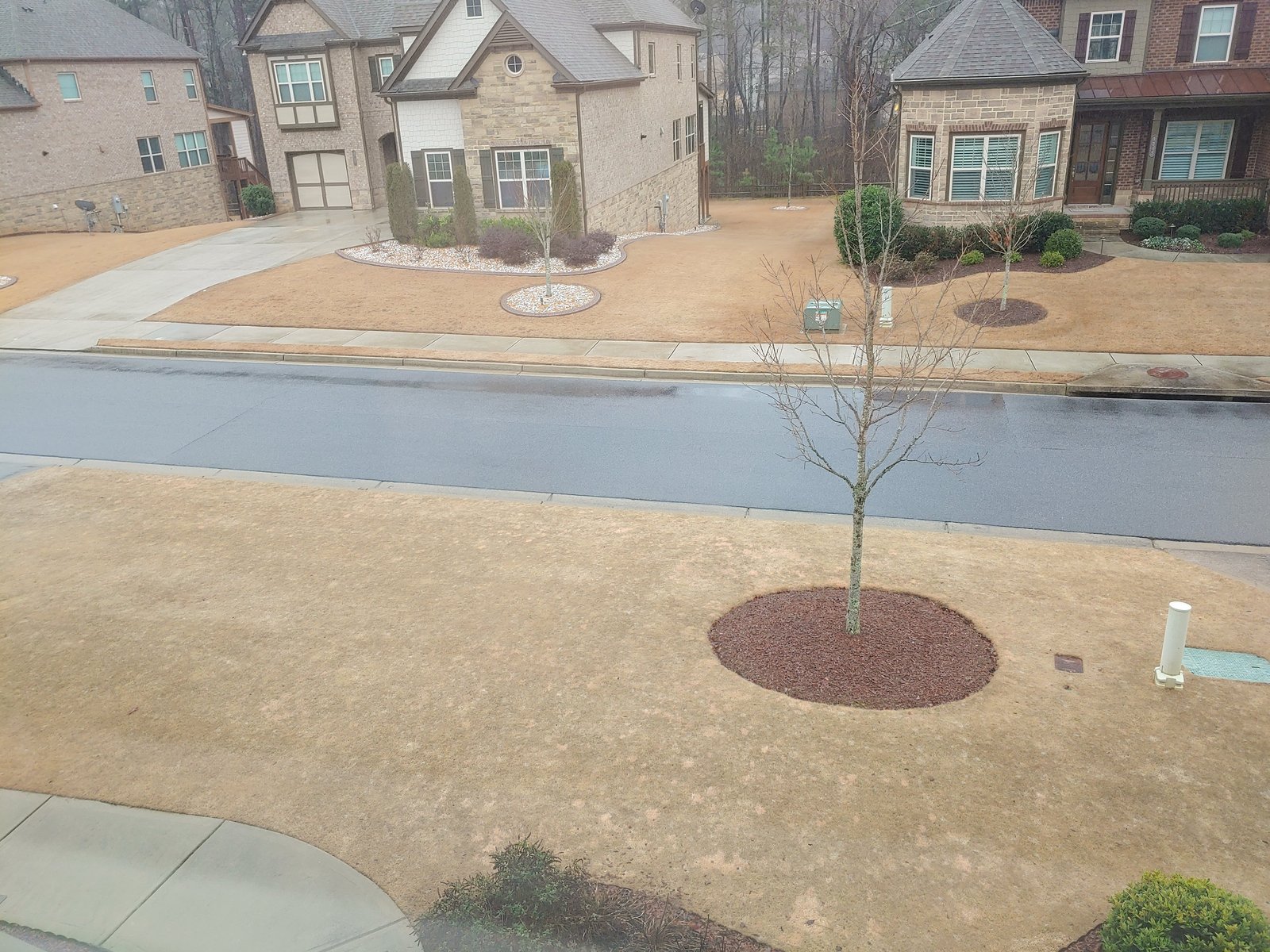Why lawns suffer in the winter
Lawns in the McKinney, Texas area can suffer during the winter months due to changes in temperature and precipitation patterns. Cooler temperatures and reduced sunlight can slow the growth and development of grass and other plants, leading to a thinner, weaker lawn. Additionally, seasonal changes in rainfall patterns can impact soil moisture levels and make it harder for plants to thrive. This can leave lawns vulnerable to damage from pests and diseases, as well as foot traffic and other sources of stress. To help maintain a healthy lawn throughout the year, it’s important to implement seasonal lawn care practices and take steps to address any issues that arise as quickly as possible. This includes regular watering and fertilization, mowing at the appropriate height, and addressing any pest or disease problems promptly.
Importance of preparing your lawn for Spring
Preparing your lawn for spring is an essential step in maintaining a lush, healthy lawn throughout the year. Without proper preparation, lawns can be more susceptible to damage from pests, diseases, and environmental stressors. Some common tasks to consider when preparing your lawn for spring include: fertilization, weed control, dethatching, aeration, and overseeding. Fertilization helps to provide the necessary nutrients for strong root development and healthy growth, while weed control helps to prevent invasive plants from taking over your lawn. Dethatching and aeration can help to improve soil health and create a more hospitable environment for grass to grow, while overseeding can help to fill in any thin or bare spots in your lawn. By taking the time to prepare your lawn for spring, you can help to ensure that it is able to withstand the challenges of the upcoming growing season and continue to thrive throughout the year.
Assess Your Lawn’s Condition
Before starting any lawn care or maintenance tasks, it’s important to assess your lawn’s condition to identify any potential problems or issues that may need to be addressed. By taking the time to evaluate your lawn’s health and vitality, you can create a more effective and targeted lawn care plan that will help your lawn thrive.
Evaluating your lawn after winter weather
Winter weather can take a toll on your lawn, even in milder climates like McKinney, Texas. Here are some tips for evaluating the damage caused by winter weather:
- Look for signs of stress or damage, such as brown or yellow patches of grass, thinning areas, or bare spots.
- Check the soil for signs of compaction, which can make it harder for grass to grow and thrive.
- Perform a soil test to evaluate the pH levels and nutrient content of the soil, which can impact the health of your lawn.
- Address any signs of pest or disease damage, such as insect activity or fungal growth, promptly to prevent further damage to your lawn.
- Consider the overall health and vitality of your lawn, including factors like grass density, color, and texture, to identify areas that may need additional care or attention.
By carefully evaluating the condition of your lawn after winter, you can develop a targeted lawn care plan that will help your lawn bounce back and thrive throughout the growing season.
Common problems to look for, such as dead spots and uneven growth
As you evaluate your lawn’s condition, it’s important to look for common problems that can impact the health and appearance of your grass. Here are some of the most common problems to watch out for:
- Dead spots: These are areas of your lawn where the grass has died and is no longer growing. Dead spots can be caused by a variety of factors, including drought, disease, or insect damage.
- Uneven growth: If your lawn has uneven patches of grass that are growing at different rates, this can be a sign of soil compaction, nutrient deficiencies, or other underlying problems.
- Weeds: Weeds can be a major problem in lawns, and can quickly take over if left untreated. Look for signs of weeds, such as dandelions or crabgrass, and take steps to control them as needed.
- Thinning grass: If your lawn has areas where the grass is thinning or not growing well, this can be a sign of soil issues, lack of nutrients, or other problems.
By identifying these common lawn problems early on, you can take steps to address them before they become more serious and impact the health of your lawn. If you’re unsure of how to address these issues, consider consulting with a lawn care professional for guidance and advice.
Implementing Lawn Recovery Strategies
Now that you’ve assessed your lawn’s condition and identified any issues or problems, it’s time to start implementing recovery strategies to help your grass bounce back and thrive in the coming months. In this section, we’ll cover some of the most effective recovery strategies for lawns, including tips for fertilizing, watering, and aerating your lawn to promote healthy growth and prevent further damage. By following these strategies, you can give your lawn the best possible chance for a full recovery and a vibrant, healthy appearance all season long.
Aeration

Aeration is an important lawn care technique that can help promote healthy growth and recovery after winter damage. It involves creating small holes in the soil to allow air, water, and nutrients to reach the roots of the grass more easily. By incorporating regular aeration into your lawn care routine, you can promote healthy growth and recovery, and help your lawn look its best all season long.
Dethatching
Dethatching is the process of removing dead grass and other debris that has accumulated on your lawn’s surface over time. This buildup, known as thatch, can prevent water, nutrients, and air from reaching the roots of the grass, leading to a weakened or damaged lawn. By dethatching your lawn, you can promote healthy growth by allowing for better nutrient and water absorption, increased air circulation, and a healthier root system.
Overseeding
Overseeding is the process of adding new grass seed to an existing lawn, typically to fill in bare or thin spots or to promote overall growth and density. By overseeding your lawn, you can help to revive a damaged or thinning lawn by introducing new, healthy grass that can compete with weeds and other unwanted growth, and help to fill in patches and bare spots. Additionally, overseeding can help to improve the overall appearance and health of your lawn by increasing the density and vibrancy of the grass.
Fertilizing
Fertilizing is an essential aspect of lawn care that can help to promote healthy growth, strong root systems, and a lush, green appearance. By providing your lawn with the nutrients it needs to thrive, you can help to revive a damaged or struggling lawn and promote healthy growth and recovery. There are many different types of lawn fertilizers available, each with their own specific mix of nutrients and benefits. By choosing the right fertilizer for your lawn and applying it at the right time and in the right amounts, you can give your lawn the best possible chance for a full recovery and a healthy, vibrant appearance.
Weed Control

Weeds can be a major problem for lawns, especially after a harsh winter. Weeds can compete with grass for nutrients and water, and can quickly take over a damaged or weakened lawn. By implementing an effective weed control strategy, such as using herbicides or hand-pulling weeds, you can help to prevent weeds from taking hold and damaging your lawn. Additionally, by promoting healthy growth through techniques such as fertilization and overseeding, you can help to prevent weeds from gaining a foothold in the first place.
Watering
Proper watering is essential for lawn health and recovery, especially after a harsh winter. Depending on your climate and the type of grass you have, you may need to water your lawn more or less frequently. Generally, it’s best to water your lawn deeply and infrequently, rather than giving it frequent shallow waterings. This helps to promote deep root growth and ensures that the grass has access to the water it needs to thrive. Additionally, it’s important to water your lawn at the right time of day to prevent evaporation and ensure that the grass has ample time to absorb the water before the heat of the day sets in.
Spring recovery strategies are crucial for reviving your lawn after the winter season. By implementing these strategies such as dethatching, overseeding, fertilizing, weed control, and proper watering, you can help your lawn grow lush and healthy. It is essential to assess the damage caused by winter weather and take appropriate action to repair it.
Moreover, hiring a professional lawn care company can bring various benefits, such as saving time and effort. With their expertise and equipment, they can provide top-notch services that can effectively restore your lawn’s health and beauty. Lawn care companies can also diagnose potential problems and provide personalized care for your lawn’s unique needs. Additionally, many lawn care companies offer ongoing maintenance services to keep your lawn looking great year-round. By entrusting your lawn to a professional, you can ensure that it stays healthy and green, without having to stress about it yourself.

